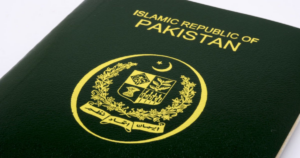
Pakistan, a nation marked by a turbulent political landscape and persistent economic challenges, finds itself grappling with familiar issues under its present government. Despite promises of change and reform, the current administration is confronted with a landscape that echoes the struggles of its predecessors. Of particular concern are the soaring inflation rates and enduring security challenges that threaten the stability and progress of the nation.
The aftermath of Pakistan’s 2024 elections has ushered in a period of heightened political instability, exacerbating the nation’s preexisting economic crisis and security concerns. The newly formed coalition government, reminiscent of its predecessor, faces an arduous task in navigating the multifaceted challenges plaguing the country. From economic turmoil to rising militancy, the government’s ability to deliver effective solutions remains under scrutiny. To understand Pakistan’s present predicament, it is imperative to delve into its historical trajectory.
The nation has long grappled with economic instability and security threats stemming from internal and external factors. Previous governments, despite varying in ideology and leadership, have struggled to break free from this cycle of challenges. Whether it be civil unrest, regional conflicts, or economic downturns, Pakistan has been no stranger to adversity. The current government inherits an economic landscape marred by inflation rates soaring to unprecedented levels. Despite efforts to implement fiscal policies aimed at curbing inflation, the impact on the common citizen remains palpable. Rising prices of essential commodities have placed a severe strain on household budgets, exacerbating poverty and inequality.
The struggle to rein in inflation reflects a broader systemic issue that transcends political affiliations. Despite past efforts to address these issues, the nation’s economy remains fragile, with real wages plummeting and the cost of essential items skyrocketing. The recent $3 billion IMF deal provided temporary respite, but the new government must now contend with renegotiating terms amidst growing public discontent and the spectre of further austerity measures.
Optimism regarding the government’s capacity to deliver tangible reforms is tempered by scepticism regarding its political mandate and ability to navigate vested interests. While proponents argue for the government’s ability to stabilize the economy, critics warn of insufficient political space to implement necessary reforms. The looming presence of Imran Khan’s Pakistan Tehreek-e-Insaf (PTI), despite his incarceration and allegations of electoral rigging, adds another layer of complexity to the political landscape, potentially fuelling public discontent and protests. In tandem with economic woes, Pakistan grapples with enduring security challenges that threaten the fabric of the nation. From internal insurgencies to border tensions, the specter of insecurity looms large.
Despite concerted efforts by security forces, the threat landscape remains dynamic and multifaceted. The current government finds itself navigating a delicate balance between safeguarding national security and fostering diplomatic relations with neighboring states. Within this milieu of economic and security challenges, the role of governance becomes paramount. While the present government may have espoused promises of change, the realities of governance have proven to be formidable. Political maneuvering, bureaucratic hurdles, and institutional constraints often impede the effective implementation of policies aimed at addressing the nation’s woes.
Moreover, the cyclical nature of Pakistan’s political landscape further complicates efforts towards sustainable development and progress. In addition to economic woes and political instability, Pakistan grapples with escalating security threats posed by militant outfits such as the Tehreek-e-Taliban Pakistan (TTP) and the Islamic State. Attacks in regions like Khyber Pakhtunkhwa and Baluchistan underscore the persistent challenges faced by security forces. Cross-border tensions with neighbouring Iran and Afghanistan further compound Pakistan’s security predicament, necessitating close collaboration between the government and the military to formulate effective counter-terrorism strategies.
As Pakistan grapples with its present challenges, a forward-looking approach becomes imperative. The need for holistic reforms that address the root causes of economic instability and security threats cannot be overstated. Collaborative efforts encompassing government, civil society, and the private sector are essential to chart a path towards sustainable development and prosperity. Moreover, a pragmatic approach that acknowledges the complexities of the geopolitical landscape is vital in navigating Pakistan’s journey towards stability and progress.
Lastly, amidst Pakistan’s myriad challenges, including economic instability and security threats, its longstanding ally China also faces growing concerns regarding the rising debt burden of the Pakistani government. As Pakistan’s largest creditor and a key investor in the China-Pakistan Economic Corridor (CPEC) project, China’s financial interests are closely intertwined with Pakistan’s economic fortunes. The ballooning debt levels of the Pakistani government have raised alarm bells in Beijing, prompting concerns over the sustainability of its investments in Pakistan. Signs of stress on the CPEC project, including delays and reassessments of certain infrastructure projects, further underscore China’s cautious approach amidst Pakistan’s economic woes.
While China remains committed to its strategic partnership with Pakistan, the evolving economic landscape necessitates a recalibration of priorities and risk management strategies. As both nations navigate the complex terrain of economic development and geopolitical dynamics, the resilience of their bilateral relationship will be tested in the face of mounting challenges.
In conclusion, Pakistan’s present government finds itself at a critical juncture, tasked with navigating through challenges that have long plagued the nation. While echoes of past administrations’ struggles reverberate, there exists an opportunity for transformative change. However, the path forward requires concerted efforts to bridge political divides, enact meaningful reforms, and address the root causes of instability. Only through collaborative action and a steadfast commitment to national progress can Pakistan emerge from its current predicament and realize its full potential on the global stage.



